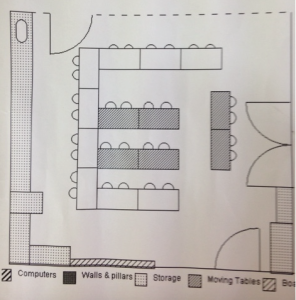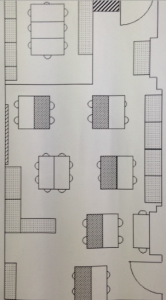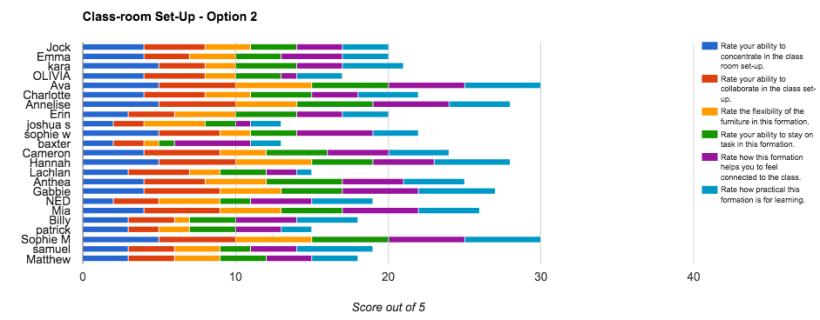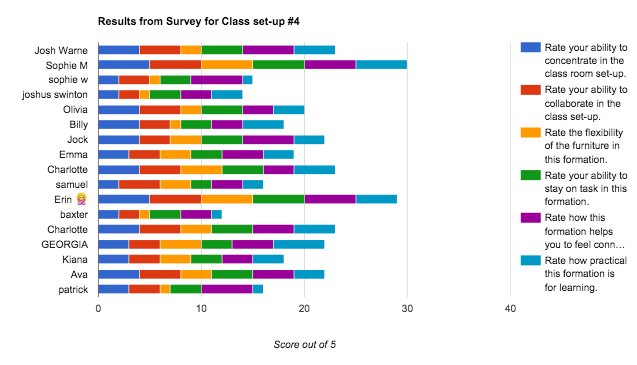One of the aspects of our classroom culture that students said they’d like to change was the desk arrangements. Some students said that the current arrangement “… did not make them feel part of the class.”
Whilst conducting their collaborative research, a couple of students found a variety of different arrangements for us to try. As a class, we decided to trial each arrangement per day for a week and evaluate the arrangements at the end of each day. Students voted on the order in which we should trial the arrangements. I created a Google Form using criteria our class had discussed and posted it on Edmodo at the end of the day.
Day 1
Here are the results for the first arrangement:

As you can see, the data was quite varied. However, we can see that this arrangement is generally not flexible but quite helpful for students to feel connected to the rest of the class. I was surprised that so many students rated this formation quite high for collaboration but then realised that many of them didn’t know what collaboration actually was.
Day 2
It’s important to note that, I actually arranged the desks after students had left of an afternoon. I tried to place students with at least 1 other person they were comfortable with. Here is the second arrangement we trialled and the subsequent survey results:
Concentration, flexibility and practicality all ranked highly in this formation. Results for Ability to stay on task were mixed as they were in the pervious arrangement.
Day 3
By day 3, students were commenting about how they looked forward to the change each day. Here’s the next arrangement and survey results: (NOTE: I was more strategic about student placement this time)

From these results, we can see that students rated flexibility and collaboration lower which is surprising given that the design is quite collaborative. There were mixed results for practicality as in the previous survey.
Day 4
On Day 4, I was a little more thoughtful about the large groups we had and arranged students accordingly. We didn’t have much time in class on the first day so this arrangement was held over 2 days.

I was surprised a how low students rated this arrangement overall as they seemed much more collaborative and on-task over that time. Students did feel more connected to the class though.
Day 5
I think we were all ready for the final arrangement – me = for my arm muscles and students= they were over the survey. For the final day, I asked students to arrange the desks themselves. They needed to choose one person who they hadn’t sat next to yet and mark the spot they were choosing on the plan.


This arrangement rated the mostly highly out of all of the configurations. Concentration and collaboration were both rated highly as was practicality.
Only one question now remains – what do we decide to do with this data?





